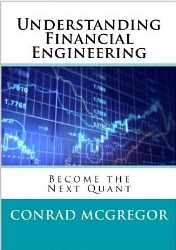Bloomberg recently published an article about “collateral transformation” and how risky traders were going to get around pesky Dodd-Frank collateral requirements on derivatives trades by borrowing high quality assets from banks and posting lower quality assets to the banks. This really is not a Dodd-Frank only phenomena, so let me explain the tangled web of logistics a bit better…
Collateral is what a firm, institution, hedge fund, or even an individual posts to a counterparty as security for a loan. When you buy a house with a mortgage, the house is collateral for the loan. When you enter into a derivative transaction with a counterparty and the value of that derivative moves against you, then you need to post collateral against the negative value that you owe to the counterparty. You do not necessarily need to “true up”, you just need to provide your counterparty with some security to keep the position open. Think of this as a poker game in a movie where the underdog runs out of money, but “promises” to pay the other in a few weeks in order to continue the game. The player with the upper hand will ask, “what-cha got?”, and the underdog opponent might pledge his wedding ring or the keys to his car….it has been played out in more than a few sitcoms or movies.
Now back to the Bloomberg collateral article. They are really talking about what clearinghouses or exchanges require for collateral in exchange traded derivatives contracts. In general, an exchange such as the Chicago Mercantile Exchange requires much higher quality collateral than an institution like Bank of America or Goldman Sachs. The insinuation is that the risky traders do not have high quality collateral to post, so they are required to “borrow” higher quality collateral from banks to post to the clearinghouse to comply with Dodd-Frank regulations.
“Collateral Transformation” is a new phrase to me. I have generally known it as a “Collateral Swap”. The issue of not having high quality assets is not an issue limited to traders and hedge funds. Think of it from the perspective of a Spanish bank that is seeing tremendous withdrawals and stresses to its own liquidity needs. The Spanish bank needs to weather the storm, so they sell higher quality liquid assets to fund current liquidity needs but are then left with a balance sheet of illiquid, lower quality assets that they do not want to or cannot sell because they have not marked them down on their own balance sheet and/or because there might not be a market for the assets at all. Therefore they need to lend out their illiquid assets and borrow higher quality assets in order to access cash. The Spanish bank will lend a big bank such as Large European Bank A $200M of illiquid, lower quality assets and borrow $100M of higher quality liquid assets. In addition, the Spanish bank will agree to pay Bank A 5% for the privilege of borrowing money when no one else would lend them money. So UBS is overcollateralized in the transaction while receiving a hefty financing rate while the Spanish bank has access to the liquidity it desperately needs. In reality, this collateral swap is really a liquidity swap. You lend me liquidity for a fee and I will lend you illiquidity. Nice and tidy.
Now take this one step further. Where does Bank A get the high quality collateral for the Spanish bank and why would Bank A want to hold these low quality Spanish securities on its balance sheet? Quite simply, it doesn’t. Bank A wants to be a middleman in the transaction and find a sucker on each side. Bank A goes to a know nothing instititution in the United States and says, “Hey, how would you like to earn an additional 1% on your high quality fixed income portfolio? All I need to do is borrow your securities for a short amount of time and I will post a ton of collateral against it. You don’t have to worry because you are overcollateralized by 40%. If you are still worried, I promise that my stalwart institution, Bank A, will make you whole if anything happens.”
Mr. “Know-Nothing” institution in the United States says this sounds like a great deal! He can earn an additional 1% on his entire portfolio with seemingly no risk! In a world of investing 10 year corporate bonds at 2.5%, this sounds like a risk-free gift.
So now Mr. “Know-Nothing” institution as unwittingly posted his high security bonds to a Spanish bank. If the Spanish bank and many others go under (as these things are likely to unfold), then Mr. Know Nothing is left holding a bunch of useless overcollateralization worth pennies on the dollar while knocking on the unresponsive doors of European Bank A.



